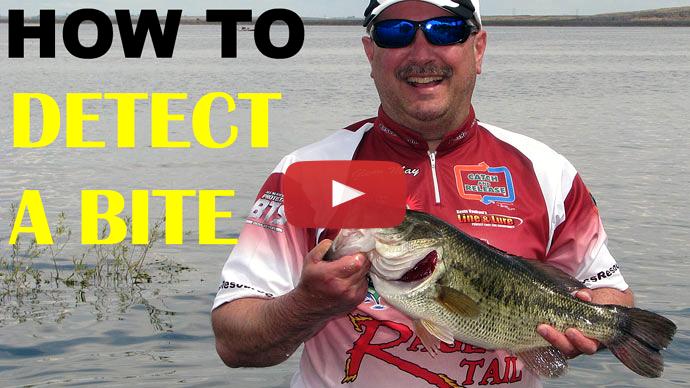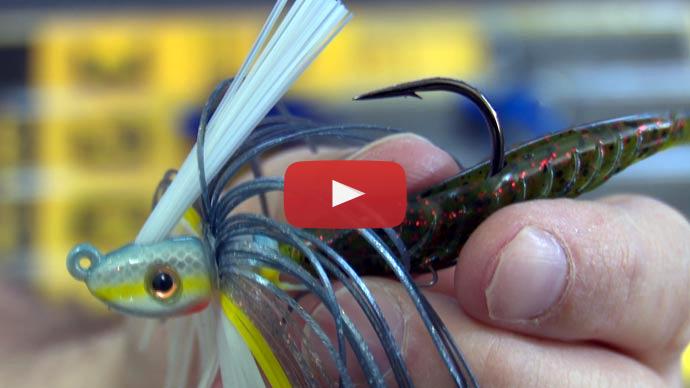So this question is about jig fishing.
Other than using a heavier jig, what suggestions do you have to help me detect strikes while jig fishing?
Well, honestly, I wouldn't use a heavier jig, to begin with, because the lighter the jig you can get away with the more strikes you're going to get. Because most of the bites occur on the fall. So the slower it's falling, the more it's in that strike zone, the more apt it is to get bit. So to detect those strikes there's really two main things that I do.
One of them is as it's falling I pay super close attention to the line, whether I'm using braid or fluorocarbon, I really focus on where that line is entering the water and pay close attention. If it jumps, twitches, moves to one side or maybe even it accelerates faster as it's falling, that's usually something on the other end of the line messing with it, usually a bass. So just visually seeing that change can help you detect strikes.
I also do a countdown method, by the way. If I'm, you know, throwing a jig and I count one, two, three, okay, hit the bottom. And I can make another cast, one, two, three, almost four and it hits the bottom. So I've got an idea between three and four-count hits the bottom and I make a cast one, two. Okay. Well sometimes bass come up and grab it and they just hold onto it. And so when it just suddenly stops for no reason, set the hook, that might be a bass. So again, really paying close attention to that jig while it's falling.
The other thing I do is once that jig is on the bottom, I like to hold the rod tip up at an angle above the nine o'clock position. So I have a better connection between the rod and the line and the jig that's down there. That helps me feel any kind of movement, a slight subtle pick up, a light strike. With a line being tight like that, it'll transmit that down the line onto the rod and down into my hands. And I have a better feel so I can feel those bites that I may not see on a tight line. So with those two things combined, I think I'm going to catch a lot more fish. Hope that helps.
And if you have any questions that you've thought about while watching this, hey, feel free to hit me up at this email down below or come to our Facebook page and leave us a message and hopefully, we'll get to your question soon. For more tips and tricks like this, visit BassResource.com.



